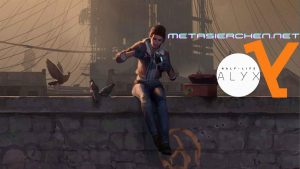Introduction Portal 2
Portal 2, developed and published by Valve, stands as one of the finest sequels ever made in the realm of video games. Initially released in 2011, the game builds upon the success of its predecessor, Portal, enhancing the innovative gameplay mechanics and introducing a far more intricate narrative. Let’s explore the multiple facets that make this title a modern classic.
Gameplay Evolution
But Portal 2’s core gameplay is an evolutionary leap from the original. The game features puzzles built around the concept of portals—spatial doorways created by the player to navigate the game world. The sequel adds new dimensions to these puzzles, with the inclusion of various gel surfaces that influence your speed and portal trajectory. Laser fields, emancipation grills, and excursion funnels are also introduced, offering a plethora of new challenges and puzzle-solving techniques.
Story Depth Portal 2
While Portal offered a compelling narrative mostly through environmental storytelling and the iconic dialogue of GLaDOS, Portal 2 takes the story to a new level. It introduces new characters such as Wheatley, the bumbling yet endearing AI, and delves into the history of Aperture Science, the corporation behind the game’s setting. The backstory, told through the hauntingly beautiful, decaying environments and snatches of audio logs, adds layers of depth to the game.
Immersive Atmosphere
Portal 2’s atmosphere is one of its standout features. The sterile, oppressive chambers of the first game are replaced by a more expansive and varied landscape, showcasing the abandoned and decaying areas of Aperture Science. The aesthetic changes reflect the game’s narrative arc, contributing to a sense of a world lived-in and full of secrets to discover.
Co-Op Gameplay
One of the most exciting features of Portal 2 is its co-operative gameplay mode, where two players control robot characters Atlas and P-Body.but This feature offers a whole new set of puzzles that require teamwork and synchronization. Playing with a friend adds a social dimension to the already complex gameplay, introducing unique mechanics and challenges.
Cultural Impact
Portal 2 has achieved critical acclaim, won numerous awards, and established itself as a cultural touchstone. Its characters have inspired fan art, memes, and academic discussions. The dialogue is snappy, memorable, and has been cited countless times in discussions about video Steam Game narrative.
Music and Sound Design
The game’s soundtrack, composed by Mike Morasky, is another layer that adds to the richness of the Portal 2 experience. The dynamic music system corresponds to player actions and puzzle-solving successes, making the audio a functional part of the gameplay. This interactive sound design adds an emotional layer to the experience, enhancing player immersion.
Philosophical Undertones
But Portal 2 delves into themes of consciousness, identity, and the ethics of AI and scientific experimentation. While the game is humorous and light-hearted, it doesn’t shy away from making players question the implications of their actions and the world they navigate.
Conclusion Portal 2
Portal 2 is more than just a sequel; it’s a reimagining and expansion of what made the original Portal so compelling. With its innovative gameplay, deep story, atmospheric settings, and challenging puzzles, it’s a game that has set new standards for what a sequel can achieve. More than a decade after its release, it continues to captivate players, retaining its place as a masterpiece in the video game canon.



